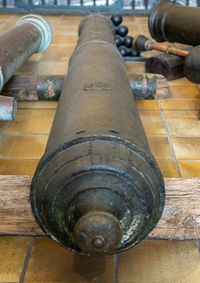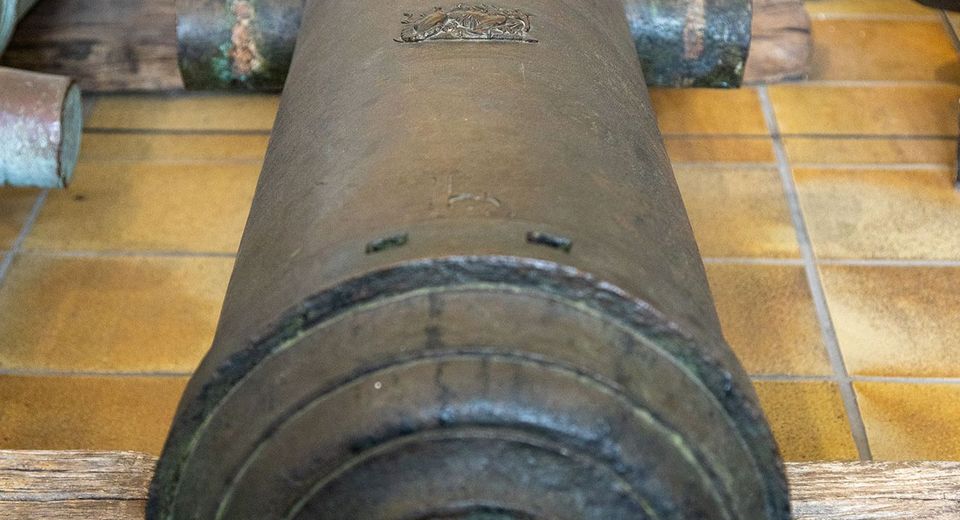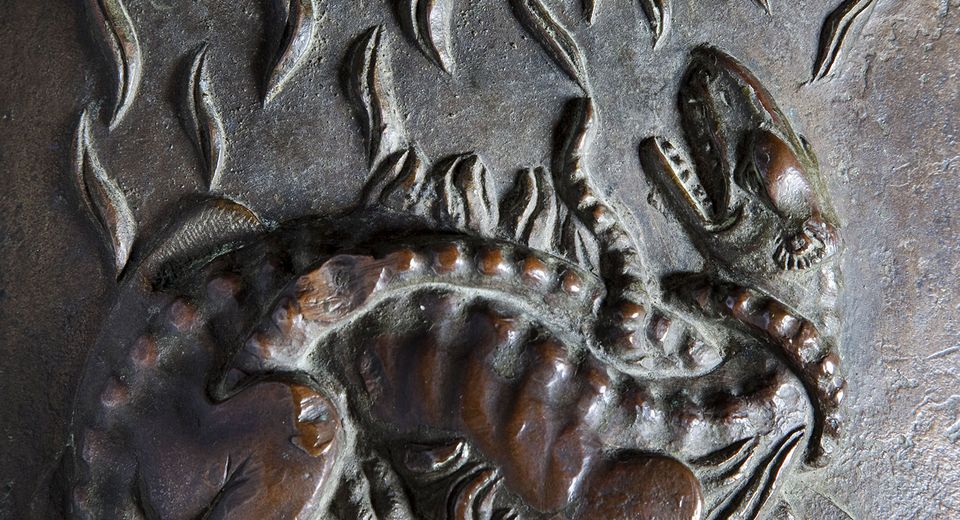Culverin with the coats of arms of Francis I and Louise of Savoy
Toulon
Couleuvrine with the arms of François I and Louise de Savoie
Attributed to Claude Laignel
This cannon comes from the Grande Maîtresse, a ship belonging to King Francis I (1494-1547), which sank in the port of Toulon in 1533.
The Culverin
 Enlarge image : Romain-Osi-Toulon-5739.jpg
Enlarge image : Romain-Osi-Toulon-5739.jpg
A culverin is a cannon with a long, relatively thin barrel, in use from the late Middle Ages to the early Renaissance. One of the “Six Calibres of France” defined under King Francis I (1494-1547) in an attempt to standardise artillery, the great culverin is 2.60 metres long and weighs 1,495 kilos. Cast in Marseille, it bears its caster Claude Laignel’s initials, engraved around the touch hole, the opening where the charge is lit. Its breech is engraved with King Francis I’s emblem, the Salamander, along with fleurs-de-lys on its chase. Louise of Savoy’s escutcheon was added later, in reference to her mother’s regency and the year 1525, in which the ship was purchased. One of the few cannons of its kind still in existence, it comes from the royal vessel Sainte-Marie-Bonaventure, also known as the “Grande Maitresse”.
The shipwreck
On 26 September 1533, a storm blew up while the royal vessel was at anchor in the port of Toulon. The rain lashed down and lightning struck the ship, probably causing its powder magazine to explode. Although the exact spot where the vessel’s wreckage lies remains unknown, this culverin was found in Toulon’s harbour on 10 May 1951 during a dredging operation prior to construction of the commercial port’s future east quay.
Collection highlight
The essential works to see during your visit to the Musée national de la Marine in Brest, Port-Louis, Rochefort, Toulon, and soon in Paris.


